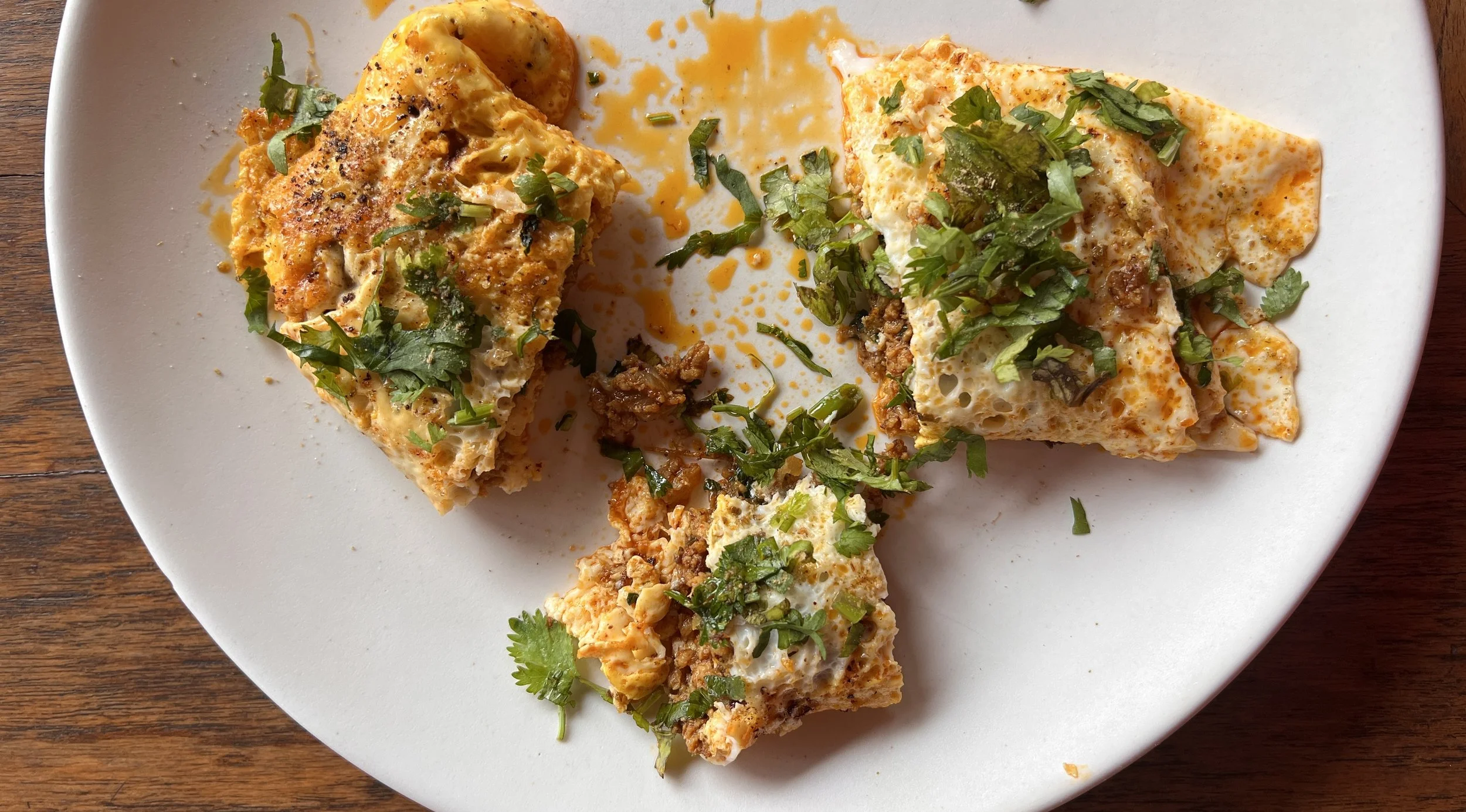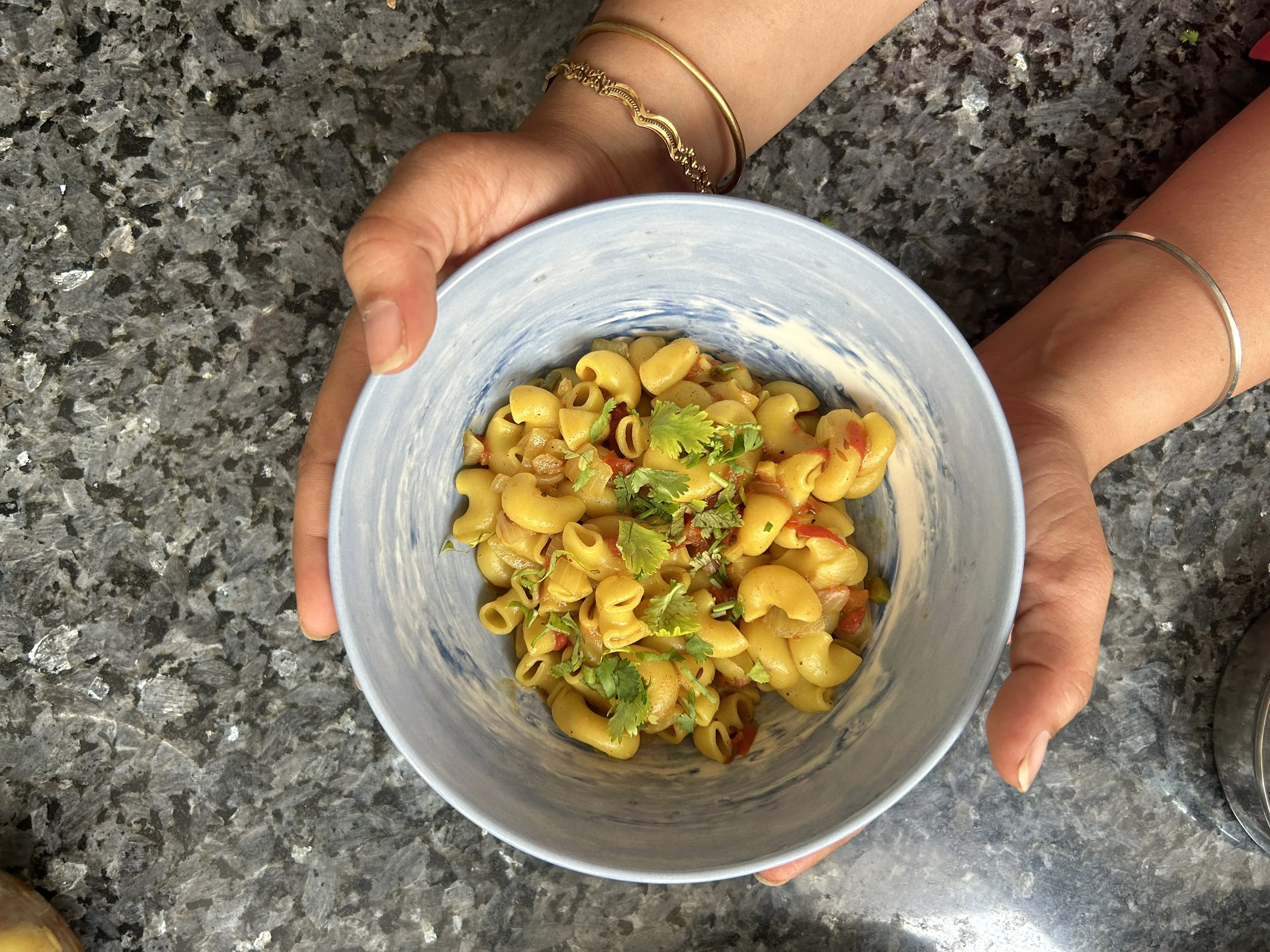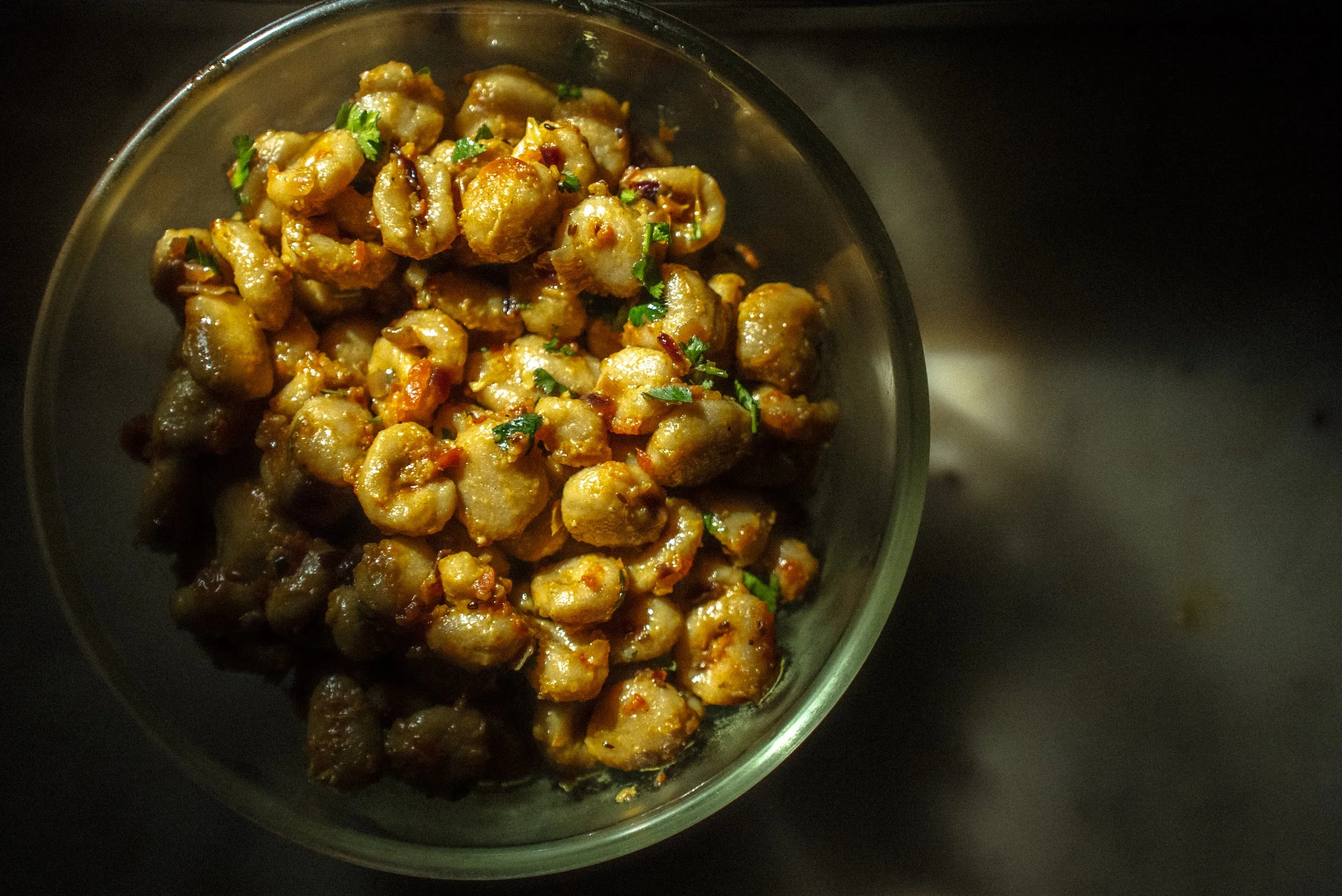I First Cooked Pork & Mustard Greens in an Electric Kettle

Simanta Barman first made this beloved Assamese dish of mustard greens and pork in an electric kettle while living in a students’ hostel. Here, he shares a more refined version—rooted in memory, elevated in technique.
As an agriculture-forward state, much of Assam’s (and several other Northeastern states’) cuisines are dominated by greens and vegetables of different kinds. One such highly prized green that thrives in winter through parts of spring is the eponymous mustard greens or laai xaak (‘xaak’ denotes the entire kingdom of leafy greens).
Laai xaak’s position in Assamese cuisine, however, owes much to its pairing with pork. Laai gahori – ‘gahori’ for pork, and collectively ‘pork cooked with mustard greens’ – is a pairing that strikes a special chord in the hearts of many. The popularity is such that it trends on social media at the onset of the laai xaak season. There are different ways this dish is prepared; some like it in a dry-fry version, some soupy, and some prefer a lighter boiled version.
For me though, pork was a discovery outside of home, and laai-gahori came much later. My parents follow a neo-Vaishnavite faith and pork is prohibited at home. It is only when I started living independently, I got to making pork. One primary reason laai-gahori is so popular is because of the minimal preparation required to make it. For college-going hostellers, it is one of the easiest and most convenient recipes: no oil required, it feels light and the taste is unmatched. I first tried making the boiled version of the dish in an electric kettle when I was in hostel. It took two hours of cooking the pork with an open lid, with the windows open to let out the steam. It was wiped clean along with plates of rice.
The outlined recipe below is, however, not the electric kettle version, but a finer version with minimal ingredients. Laai xaak comes in different varieties – there are broad leaves extending up to a hand’s length; there is a variety that has tinge of darker green; and there is the one with shorter leaves in bunches. I personally prefer the shorter variety, as the broader leaves tend to have a hint of bitterness in the stems. Good quality pork is a must for enhanced flavour. The belly of the pig can be avoided as it releases excess fat while it cooks. Although there are variations to a laai-gahori recipe, most across the Northeast prefer a no-oil version to other alternatives. Some even use smoked pork alternatively.
RECIPE FOR LAAI GAHORI
Ingredients
2 bunches of fresh laai xaak (mustard greens)
500 gm fresh pork
1/2 a cut garlic bulb
1 bulb ginger
4-5 (as preferred) chillies
2 tomatoes
1 medium size potato (optional)
Method
Wash the medium-cut pork and put into a pan. Let it sit for 2-3 minutes on medium flame.
Add crushed ginger-garlic-chilli and stir occasionally to avoid sticking in the pan. Keep stirring until the pork releases its oil. (It is a no-additional oil recipe, as pork oozes excess oil itself)
Add the sliced potato and tomatoes and stir for two minutes. Put the lid on and let it steam on low-heat for three minutes.
Once the aroma starts wafting through the lid, add some water (could depend on the amount of curry you want to keep, ideally two-three cups do) and let it steam for around 30 minutes on low heat.
If the meat is not soft enough after 30 minutes, can be kept for another 15 minutes.
Add the laai xaak by hand-tearing it into uneven shapes. This supposedly enhances the taste.
Cook for another 10-15 minutes. Serve over a hot plate of rice and enjoy.
Simanta Barman is a freelance journalist based in Assam. He can be reached here.
ALSO ON GOYA












